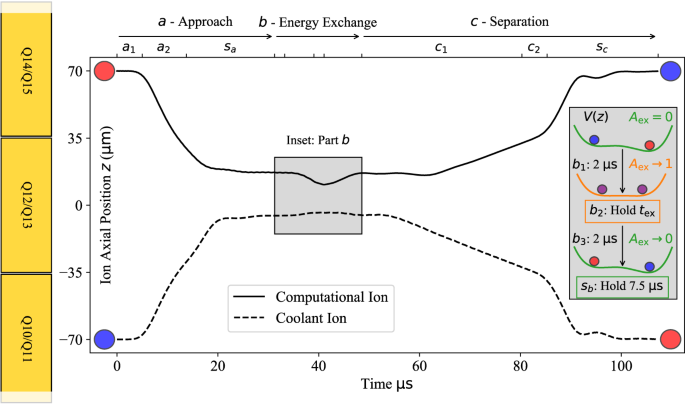Phys.org February 6, 2024
In current QCCD implementations, imperfect ion transport and anomalous heating can excite ion motion during a calculation. To counteract this, intermediate cooling is necessary to maintain high-fidelity gate performance. Cooling the computational ions sympathetically with ions of another species creates a significant runtime bottleneck. Researchers at the Georgia Institute of Technology demonstrated exchange cooling which does not require trapping two different atomic species. They introduced a bank of “coolant” ions which were repeatedly laser cooled. A computational ion could be cooled by transporting a coolant ion into its proximity. Experimentally they tested this concept and executed the necessary transport. They removed over 96%, and as many as 102(5) quanta, of axial motional energy from the computational ion and verified that re-cooling the coolant ion did not cause decoherence of the computational ion validating the feasibility of a single-species QCCD processor… read more. Open Access TECHNICAL ARTICLE

Exchange cooling in the Peregrine trap. Credit: Nature Communications volume 15, Article number: 1089 (2024)